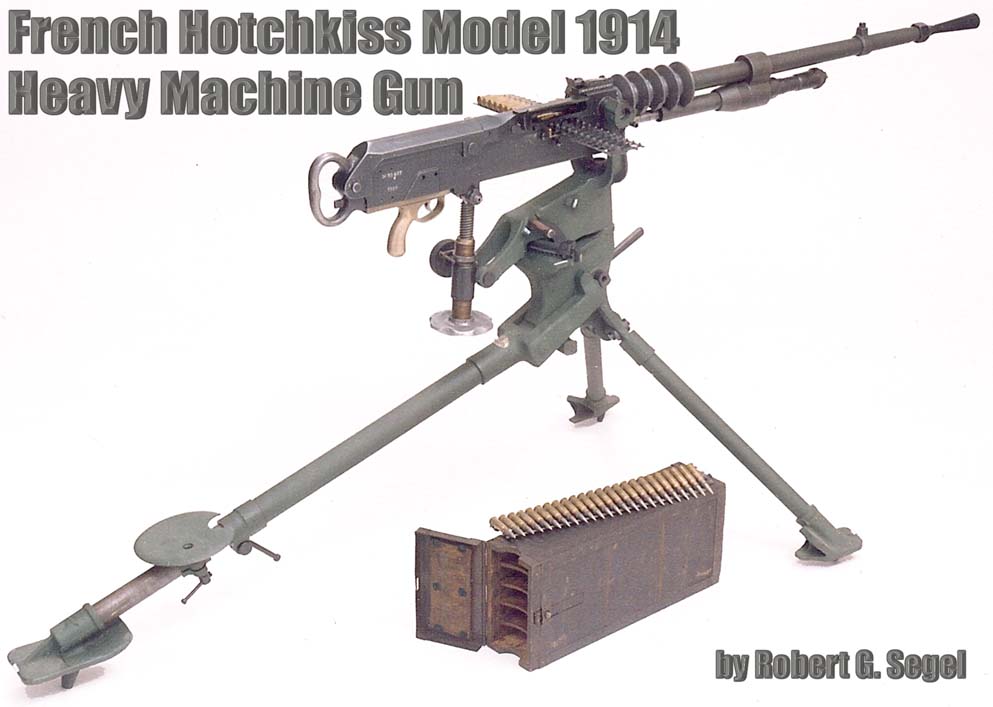By Liviu Stoica
By the end of World War I it became apparent that automatic firepower was needed for mobile warfare to improve combat efficiency. The solution was a new type of military weapon firing a pistol cartridge; a weapon between a pistol and a rifle that could be fired from the hip or shoulder. The result was the submachine gun, a hand-held, light automatic, magazine-fed weapon for short range combat.
In south-eastern Europe on the Black Sea, Romania was well aware at the beginning of World War II of the importance of developing their armament industry. The main Romanian manufacturer of infantry weapons and small arms ammunition was the Cugir factory that had emerged as a metallurgic center in 1799. During World War II, the Cugir factory from Transylvania was part of the military-industrial complex C.M.C. (Copsa-Mica Cugir). Due to a high technical potential, in early the 1940s, the Cugir factory made the first submachine gun of Romanian conception: the Orita model. Romanian Captain Marin Orita was responsible for a few military designs, but his crowning achievement is the 9mm Orita M1941 submachine gun that bears his name. In 1949, at the age of 52, Marin Orita ended his 25 years of military service.
The 9mm Orita M1941 submachine gun was first issued in 1943 to Romanian troops fighting on the Eastern Front, at a time when the foot soldier’s weapon was the Czech made 7.92mm Model 24 (vz.24) rifle called by the Romanians Pusca ZB. This new automatic weapon greatly improved the firepower of Romanian troops who had been at a disadvantage facing the fast-firing Russian submachine guns. During the campaign of 1944-45 when the Romanian troops were fighting the Wehrmacht liberating Hungary and Czechoslovakia, the 9mm Orita M1941 submachine gun was issued on a larger scale proving its worth.
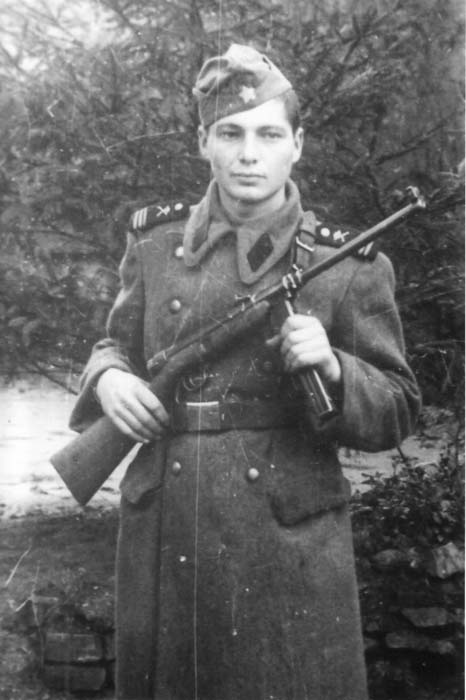
Chambered for the 9x19mm Parabellum pistol cartridge, the Orita M1941 submachine gun is blowback operated and fires from an open bolt. There is no mechanical locking of the bolt. The weapon will fire if the bolt moves forward with a loaded box magazine in place. The massive bolt used by the Orita M1941 has an incorporated firing pin and inside hammer. Since the firing pin does not stay permanently to the front of the bolt, there is no risk of detonation before the bolt is completely closed. As the bolt closes, the hammer hits against an outside projection in the bolt-way and a pivoting movement starts. The hammer rotates in the bolt and the other end of it strikes the firing pin that moves forward to hit the cartridge primer. This unusual system as used by the Orita M1941 is very safe since the hammer cannot hit the firing pin before the action is closed. There is a good balance between the bolt and the recoil spring. A heavier stiff recoil spring brings up the cyclic rate of fire but a heavier bolt will decrease it.
The Orita M1941 submachine gun has a vertical fire selector switch located on the right side of the receiver about 3 inches (77mm) behind the rear sight. There are two marked positions: “A” for full automatic with the selector pushed down and “1” for semiautomatic with the selector pushed up.
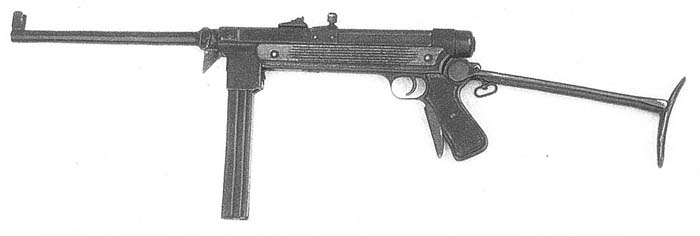
A horizontal button safety in front of the trigger guard could be moved from side to side. To fire the weapon, the safety had to be pushed from right to left. The left end of the safety button had an L-shaped device that blocked the firing mechanism when the safety was pushed from left to right and the weapon could not fire. This safety button proved to be unreliable and was later removed. An empty hole is visible in front of the trigger guard if the spot was not filled and repaired. A new vertical switch safety was installed parallel to the rear sight on the right side of the receiver. This manual safety is pushed up for FIRE, down for SAFE.
The foresight is a sturdy blade with perforated guard wings on either side and is located at the very end of the barrel. The foresight blade is adjustable for windage. The weapon has a well protected open V rear sight calibrated up to 500 meters (548 yards), which is adjustable only for elevation. This maximum range seems to be overly optimistic, but it was in keeping with some other 9mm submachine guns of the time that had rear sights graduated up to 500 meters or more; such as the German MP28, Finnish M31 Suomi, Italian Beretta M1938A, British Lanchester Mark I and Czech ZK383.
The 9mm Orita M1941 submachine gun is fed by a dependable 32-round detachable box magazine inserted vertically from below the receiver. The weapon has an excellent magazine housing which is well projected from the receiver wall and serves as a forward grip for the shooter’s hand. A box magazine must be inserted 2.5 inches (65mm) into the magazine housing to be locked right. A serrated magazine catch-release is safely located on the rear of the magazine housing, making an accidental manipulation less possible. The Orita magazine holds cartridges staggered in two columns, with single-position feed. It has no indicator holes for the loaded ammunition and it can be identified very easy because of the two long deep ribs indented into each side of the magazine body from top to the very bottom. These four ribs give more strength to the magazine body and at the same time reduce the internal friction. Having an unusual shape, the magazine follower is machined from solid steel, which is highly polished. The 32-round Orita box magazine uses a 24 by 25 turns conventional compression spring in elliptical shape. A depression is stamped into the back edge of the removable floorplate to help it to lock into the right position. Some 25-round Orita box magazines were manufactured too.
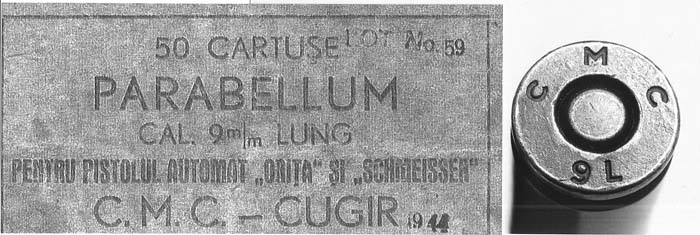
In 1943, Captain Orita patented a magazine loading tool that has a length of 9.1 inches (232mm) and weighs unloaded 13.7 ounces (0.388 kg). This unusual device has four interior prongs and at the top there is a vertical steel cartridge guide that can be loaded with a maximum of 15 cartridges. It locks into the Orita box magazine and, rotating the handle clockwise, the cartridges are loaded rapidly by a tangential motion.

The 9mm Orita M1941 has a fixed semi-pistol grip style wooden stock with a metal buttplate. The forearm extends up to the magazine housing. The steep angle cut into the stock provides a diagonal angle for the trigger hand. The shape of the one piece long wooden stock differs slightly depending on the Orita submachine gun variant. There are sling swivels mounted by the front end of the receiver and on the right side of the wooden stock. The cocking handle is located on the left side of the receiver. This arrangement helps the shooter to change the box magazine and to retract the cocking handle using the left hand while the right hand is kept near the trigger. The cocking lever folds down.
The disassembly procedure for routine cleaning and maintenance is simple. After removing the box magazine and making sure the weapon is clear, the serrated cap from the end of the receiver is unscrewed to release the return spring which is compressed. The circular receiver cap differs slightly in length depending on the Orita variant and it is secured in place by a simple device. The bolt is taken out and the Orita submachine gun is field stripped.
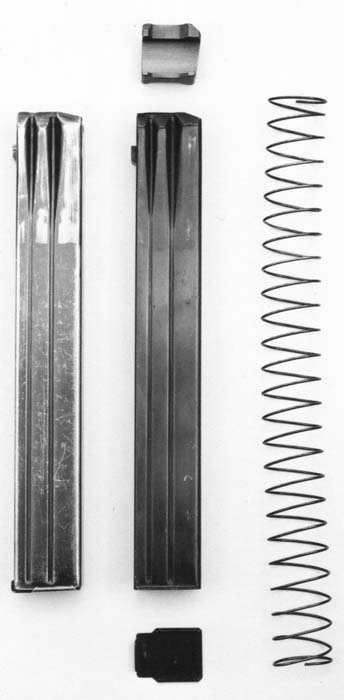
Very well constructed, the Romanian 9mm Orita M1941 submachine gun is made from 78 different parts and is polished blue finished. The trigger group components and the sear are made of heat-treated steel. The receiver is machined from a high-quality steel forging and very few stamped sheet metal parts were used. The manufacturing process was expensive and time consuming: but such is the case for quality.
Although the Orita M1941 was highly regarded and performed well in combat, actual service revealed two shortcomings: the pistol grip was prone to breakage and the weapon could accidentally discharge if dropped or mishandled while it was cocked. A fault very common to all open bolt submachine gun designs.
Shortly after 1945, the surviving wartime Orita M1941s were modified at the Cugir factory. It was a large operation directly conducted by Marin Orita. The result was a simplified model known as 9mm Orita M1941/48 or Model 48. Today, the original unmodified 9mm Orita M1941 submachine gun is an ultra rare weapon that would be prized in any collection.
The Orita M1941/48 has no fire selector: it fires only full automatic. The initial fire selector switch from the right side of the receiver was removed. The previous vertical safety switch located parallel to the rear sight on the right side of the receiver was removed as well. The modified weapon was fit with a grip safety at the rear of the trigger guard. This new safety may sometimes be found in various shapes. The unrealistic rear sight calibrated up to 500 meters was replaced with dual flip-up apertures set for 100 and 200 meters. Damaged pistol grips were repaired and reinforced with metal or steel pins and some M1941/48s were fit with new wooden stocks. The position of the swivel fixed on the wooden stock was moved on the left side. Many old trigger guards with the hole at the front from the horizontal button safety were replaced. Some modified Orita M1941/48s use the same old receivers and some rebuilt weapons have new made receivers. An older receiver used by the M1941 can be recognized by the markings stamped on top of it and by the repaired spot where the vertical safety switch was located parallel to the rear sight on the right.
A scarce variant of the Orita submachine gun having a folding metal stock was manufactured at the Cugir factory after 1945. The new sturdy weapon has a large grip safety to prevent accidental discharge. A horizontally grooved wooden side plate is fixed on each side of the weapon. The cocking lever is knurled and it is directed upward at a 45 degree angle. A rear swivel is located near the mechanism that folds the steel stock. This was the first automatic weapon with a folding stock ever manufactured in Romania.
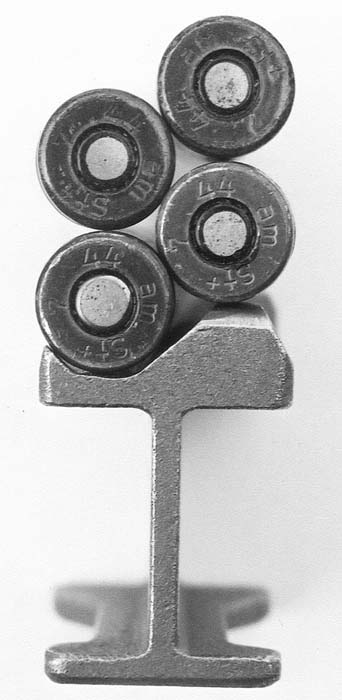
The top of the receiver used by the 9mm Orita M1941 submachine guns is marked: “UZINELE CMC CUGIR” over “P.U.A. ‘ORITA’ Md.1941 Cal 9mm” followed by a six digit serial number. The new receiver used by some M1941/48s is marked on top: “AUTOMATUL UMC 49” also followed by a six digit serial number. The total number of both models of the Orita M1941 and M1941/48 submachine guns made and modified at Cugir factory remains unknown today but the serial numbers may give us a clue. Some modified Orita M1941/48 submachine guns have old receivers stamped “Modificat 48” or “Model 48”. A triangle stamp with the letters “AA” inside means “Arsenalul Armatei” (Army Arsenal). Small quality control markings can be stamped as well.
The 9mm Orita M1941/48 submachine gun remained in Romanian army service up until the late 1950s. In the mid-1970s the weapon was still used for training by the so called Garzile Patriotice (Patriotic Guards), a kind of civilian national guard and territorial defense that had been created in Romania during the autumn of 1968 as a direct response to the soviet military invasion of Czechoslovakia in August the same year. By 1980, the remaining Orita M1941/48 submachine guns used by Garzile Patriotice were replaced with Romanian made 7.62mm Kalashnikovs.
While in Romania, the author had the rare opportunity to shoot the 9mm Orita M1941/48 submachine gun. It is well designed, easy to handle and accurate weapon. The box magazine is easy to insert and remove. Short two and three shot bursts can be fired through trigger manipulation. A large ejection port is located above the magazine housing on the right side of the receiver. The empty cases fly with good forceful ejection, landing about five feet away to the right. When fired from the shoulder the weapon has the tendency to climb fast if bursts are not controlled. This reliable Romanian burp gun is very comfortable fired from the hip with the magazine housing firmly gripped and the muzzle blast is moderate and not disturbing to the shooter.
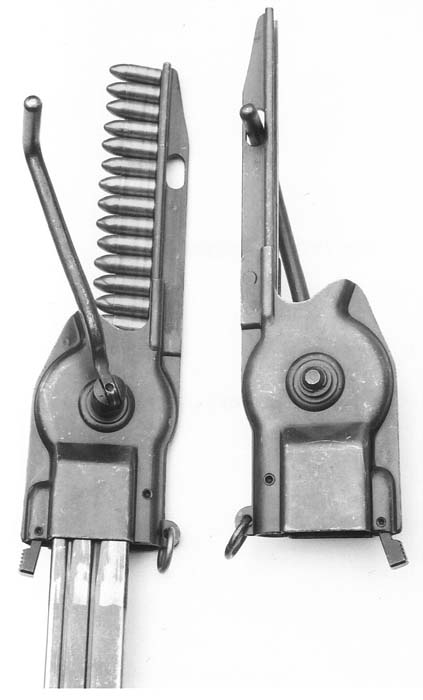
| This article first appeared in Small Arms Review V12N4 (January 2009) |





